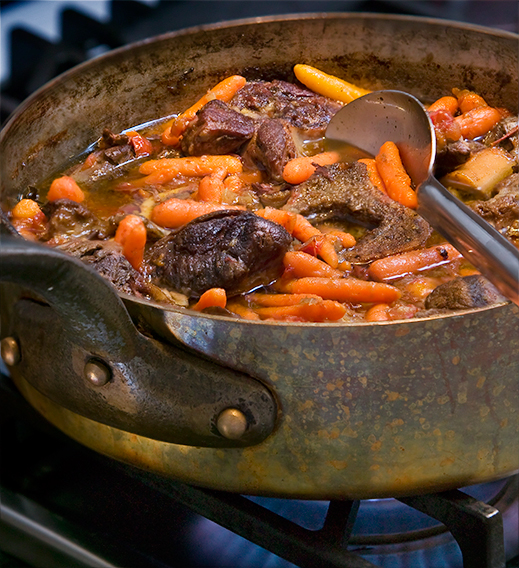
The renowned French chefs Jean & Pierre Troisgros once said "Cooking should be a carefully balanced reflection of all the good things of the earth." They may well have been describing stew which is essentially a great melting pot of flavors extracted over a period of time. If ever there was a dish that reflected ‘all the good things of the earth’ and of the season, this is it. Stews are to winter what salads are to summer. They are in essence rib-sticking, heart-warming and satisfying.
They have also been around for a very long time. There is evidence that these types of dishes have existed since the advent of clay pottery. Archeologists have found cooking vessels, called Ting, dating back 8,000 years in Hebei Province in China. These three legged, robust pots were used to cook stews and soups. The ancient Chinese stew, called Keng, was cooked in such vessels, which were also made of bronze. The cooking methods used at the time are recorded in texts surviving from the Zhou dynasty (1050-249 BC). Stews it seems are universal, for all cultures have records of them in their culinary pantheons in one form or another.
Literature, ancient cookbooks and historical texts are steaming with ragouts and stews. In Apicius’s cook book ‘De Re Coquinaria’ written two thousand years ago, he describes a stew called ‘Minutal Marinum’ (a seafood ragout) in which the fish is cooked with wine, herbs, olive oil and vegetables. The recipe is remarkably similar to dishes found along the coast of France and Italy today. Taillevant has many recipes in his book Le Viandier printed in 1395 for all manner of ragouts and stews, from Crayfish to perch and Hare to Veal. The references are not limited to cookbooks. Cervantes wrote of the esteemed Spanish stew Olla Podrida in Don Quixote in 1605 where Sancho Panza salivates over a cauldron of the simmering ragout. Lord Byron wrote about Irish Stew in The Devils Drive in 1814 and Shakespeare speaks of pottages in his plays.
Mrs. Beeton, in her marvelous tomb on Household Management from 1890 wrote that this type of French cookery “is an essentially slow process by which the natural flavors of the substances are extracted by gentle means”. A quote the founder of The Slow Food Movement, Carlo Petrini has obviously taken to heart. Frustrated by the proliferation of fast food restaurants in Italy in the mid 1980s, and in particular by the proposed opening of a MacDonalds near the Spanish Stems in Rome in 1989, he created a movement that champions the growth, use and enjoyment of local, sustainable and seasonal food. It enthusiastically promotes a slower pace of life, hence its snail logo, and embraces all manner of dishes that evolve over time. Stews are a prime example. His philosophy has attracted a great many followers. There are now over 100,000 members in over 132 countries, including a convivium in Santa Barbara.
There is something about stews that appear to make a lasting impression. As you circle the globe during winter months, the aromatic tendrils emanating from long- simmering pots will tantalize your olfactory senses. Saunter over France and some of the best known dishes of the country’s culinary repertoire will no doubt tempt you, the aromatic Boeuf Bourginon is the prime example. But linger a little longer in the countryside and you may well be seduced by a Provencal Daube or a Pot au Feu, or even Bouillabaise, the great fish stew from Marseille.
Europe is awash in slow cooking, think of the robust Osso Buco from Italy or Hungarian goulash for example, which dates back to the ninth century and the Magyar shepherds of the region. Further east still as the frigid air settles over the Russian Steppe’s you may well encounter Zharkoye, a beef and parsnip stew, topped with sour cream. Hover over the great cuisines of China and India and you will find simmering, aromatic dishes such as fragrant cumin laced curries or the anise flavored Chinese beef stew, thick with soy sauce and sugar. Cross the Pacific and the history of the America’s is rich in ragouts. A Birria in Mexico, a Charquican in Chili, the Brunswick Stew in Virginia and Burgoo from Kentucky or the dish that brings us back to the cuisine of Provence, a Gumbo from Louisiana which was originally based on Bouillabaisse.
Whatever your culinary preferences the guiding principal is always the same. Take a best, freshest ingredients you can find - preferably local - prepare them with care and in the case of a stew, nurture them over the course of a few hours to capture their essence. If preparing a meat stew, do not let the stew boil as this will dry out the texture of the meat and it will get tough. Let it gently simmer and you will be rewarded with a moist, fragrant dish. Although she was writing about Provence, Elizabeth David could well have been speaking of the central coast and of Santa Barbara in particular as she penned “Here in London it is an effort of will to believe in the existence of such a place at all. But now and again the vision of golden tiles on a round southern roof or of some warm, stony, herb-scented hillside will arise out of my kitchen pots with the smell of a piece of orange peel scenting a beef stew”. What could be more delicious on a winter’s day?
This winter stew epitomizes everything that I love about this season. The house fills with delicious smells as it simmers slowly on the stove. This is one of my mother’s specialties; a recipe handed down by a family friend that she has crafted to her own over time. A perfect dish for a chilly, blustery day.
Serves 8 people
Olive Oil
1 red onion – finely chopped
6 cloves garlic – peeled and chopped
2 inch piece of garlic – peeled and chopped
6 pieces beef shank
Salt
Freshly ground pepper
3 cloves per beef shank
6 Roma tomatoes – chopped
2 pinches sugar
4-6 cups vegetable stock
1 lb organic carrots – peeled and chopped
DUCK RAGOUT
This duck stew is a slowly braised red wine ragout. It is a delicious, fragrant dish that is prepared over a day or two. The pieces of duck marinate overnight, giving them time to absorb the acidity and fruit of the wine, the sweetness of the shallots and root vegetables, and the essence of the juniper berries. Afterwards, they are pan-seared to a deeply golden color and then, reunited with the marinade, slipped into the oven to braise until tender. This dish was inspired by a good friend of mine who is as passionate about food as I am. We have spent many hours concocting different dishes together, including one Christmas where we spent days making puddings. This dish is perfect for the holidays as there is something festive about marinating duck and the subsequent luscious result.
Serves 8 people
For the marinade:
8 Duck legs
Salt and freshly ground white pepper
6 shallots - peeled and quartered
½ bunch green onions – end trimmed and then cut into ½ inch pieces
1 medium onion – peeled and sliced
8 cloves garlic, peeled and cut in half
3 medium carrots, peeled, trimmed, and thinly sliced
3 stalks celery, peeled, trimmed, and cut into 1inch-thick slices
1 inch piece ginger – peeled and diced
20 black peppercorns, crushed
1 tablespoon Herbes de Provence
2 sprigs fresh thyme
2 bay leaves
10 juniper berries
Zest of 3 oranges – then quarter the whole oranges
2 bottles red wine – use a dry red, but don’t stint on the wine. Use cheap wine and your dish will reflect it.
To marinate the ducks:
To cook the ragout:
1 lb boiling onions – blanched in boiling water for 2 minutes, peeled and then set aside.
1 oz butter
1 lb small brown mushrooms or shitakes – ends trimmed off, then quarter the mushrooms
Salt and pepper
Note: This dish is even better the following day, so once cooked it can be refrigerated, then re-heated slowly in the same dish.
WINTER ROOT VEGETABLE TAJINE
Serves 8 people
3 red onions – peeled and sliced
Olive oil
1 tablespoon Ras al Hanout
1 lb yellow carrots – peeled and sliced lengthwise
1 lb red carrots – peeled and sliced lengthwise
1 lb parsnips – peeled and cut into slices
1 bunch beets – peeled and cut into slices
2-3 leeks – peeled, washed carefully and cut into 2 inch pieces
3 sprigs fresh thyme
Lemon zest and the same lemon quartered
Coarse sea salt
For the onion and chive yogurt:
8 oz Greek yogurt
3 green onions – finely chopped
1 bunch chives – finely chopped
Zest of 1 lemon
Alphabet Stew
"The beautiful and the good are identical but the fleeting impressions created by the work of a cook or a musician disperse even as they are being experienced. Raphael's painting, The Transfiguration, is immortal, but Carême's 'Ragout de truffes à la parisienne' lasts while it is being eaten, just as roses that last as long as their fragrance can be enjoyed." So wrote, Lucien Tendret, the great-nephew of Brillat-Savarin 150 years ago. His thoughts could apply to all the dishes in the list below which show just how universal these aromatic creations can be.
A is for Atzem Pilafi – Greece
B is for Baeckeoffe – Alsace
C is for Charquican – Chili
D is for Dinuguan – Philippians
E is for Estoufade – France
F is for Fozelek – Hungary
G is for Ghormeh Sabzi – Iran
H is for Hasenpfeffer – Germany
I is for Irish Stew
J is for Jjigea - Korea
K is for Kikkinisto – Greece
L is for Locro – Andes
M if for Merchando – Philippians
N is for Nikujaga – Japan
O is for Olla Pedrida – Spain
P is for Potjiekos – South Africa
R is for Ragu d’Anitra con Castagne - Lombardy
S if for Sancocho – Caribbean
T is for Tharid – Arabia
W is for Waterzooi, Belgium
Y is for Yakhnat al-Bamiya, Lebanon
Z is for Zharkoye, Russia
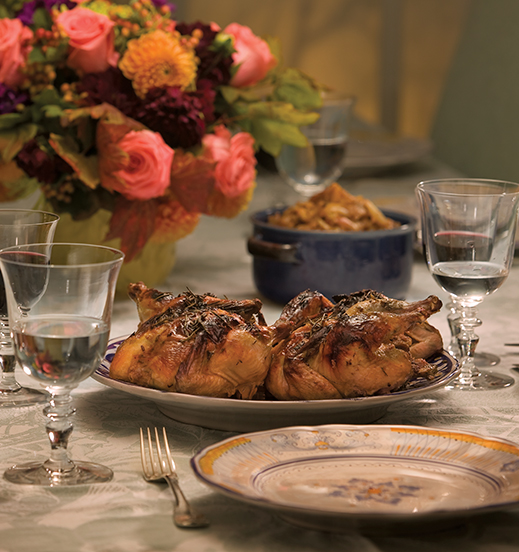
I like to think of the food that comes from this season as a reflection of the following simple philosophy. Nature has in its annual harvest, offered up some of its most delicious elements; a luscious fig, an ornamental pomegranate, a perfectly ripe delicate pear, a rotund pumpkin and an avalanche of exquisite tubers. Rushing their preparation and the subsequent eating of such splendors seems to be contrary to the season itself.
History it seems agrees. From the time of the ancient Greeks, Romans and Egyptians, annual festivals have occurred to celebrate the harvest. For thousands of years the human race has, in all parts of the world, taken the time to give thanks for the abundance that surrounds them.
The Jewish harvest festival, Succoth, is held in either September or October. It stems from the time of their exodus from Egypt, during which Hebrews traveled in the wilderness on route to Canaan. During their pilgrimage, they lived in makeshift shelters called a succah. They also gathered in sukkot (the plural of succah) to pray and eat together. As a result, Succoth is also known as the Feast of Tabernacle. During harvest time, farmers also lived in sukkot in their open fields. During this festival, farmers pray and thank God for the crops. It is a tradition that continues to this day, with festivities taking place outdoors.
Every year on October 4th, the Ancient Romans celebrated the Cerelia Harvest, an event that honored Ceres, the goddess of corn, (the origin of our word cereal), with festivities that included parades, games, sports and feasts. Modern day ‘Thanksgiving’ is an extension of just that.
Since 1621 Americans have annually given thanks for the abundance that befalls them. When Governor William Bradford proclaimed this day, they celebrated with their neighbors, their fellow pilgrims and with Chief Massasoit and the Wampanoag Tribe. The Native Americans brought many of the dishes served that day. They feasted upon oysters and eel, ate goose, venison and corn bread with leeks and watercress and had berries and plums, washed down with sweet wine. A menu that would be fitting today.
It is a holiday which I have entirely embraced since I came to California. A holiday where families come together and eat together. There are no other constraints, no pressure for gifts and it is universally enjoyed by all in America, irrespective of ethnicity or religious preference. What better way to honor a season.
Thanksgiving Day is a perfect allegory for a delicious autumnal day, just not as elaborate. Growing up in London our Sundays were often like this. We would take huge long walks across the heath on blustery days with billowing white clouds scooting low across the London skyline. We would fly kites and run pell-mell down the hills, play hide and seek and climb trees. Then home to a languorous lunch that often shuffled into dinner. Hearty soups such as the Celeriac Soup played a prominent part in those meals, followed by roast chicken or pork tenderloin with apples and prunes. As more friends dropped by, another plate would be added to the dinner table and conversations were lively and animated. It is a tradition which I enjoy to this day.
Autumnal meals bring warmth and nourishment and ideally create a culinary landscape in which we are all active participants, whether picking fruit from an apple tree, laying the table or chopping vegetables together in the kitchen. Edwin Way Teale, one of America’s great naturalists, once wrote ‘For man, autumn is a time of gathering together. For nature, it is a time of sewing, of scattering abroad’. So as nature sheds her splendid crimson coat and edges towards hibernation, I like to imagine all of us pulling up a chair at our dinning tables and sharing a meal, such as this one, with our friends.
CELERIAC SOUP WITH PANCETTA AND CRÈME FRAICHE
I spent my first Thanksgiving in Newport Rhode Island in freezing weather. My lovely friend Brooke cooked a feast fit for kings. We began with an aromatic soup and we ate for hours as the winds howled outside. Over the past two decades I have cooked Thanksgiving each year with great pleasure. We - as all families do I am sure – now have our own traditions. One of ours is to begin the meal with a soup, but each year it is a new soup, one usually created for that day. This is one of our favorites and I now make it many times during the autumn and winter months. It is warming and fragrant and perfect when the wind is howling or in our case, a chilled day by the California Coast.
Serves 12 people
4 medium sized celeriac – peeled and coarsely chopped
3 medium sized potatoes – peeled and chopped
2 large onions, finely chopped
10 cups vegetable stock
4 or sprigs fresh thyme
1 bay leaf
2/3 cup cream
Salt and pepper
4-5 slices pancetta – diced
2/3 cup crème fraiche – placed in a small bowl
Small bunch chives – finely chopped
I have over the years roasted many stuffed turkeys, as tradition warrants. Recently I have tried some new dishes and found that Cornish hens – stuffed or otherwise – are a great substitute for a huge turkey, particularly if you can find organically raised hens. We are fortunate to have at our local farmers market a lady who has just that. They are succulent and moist. Filled with the Grand Marnier stuffing and basted with the juices of luscious oranges it is a fitting dish for the occasion.
Serves 12 people
6 Cornish game hens
For the stuffing:
3 sausages (choose either spicy Italian, pork, turkey or chicken of your choice) taken out of its sausage casing and cut into small pieces.
1/3 cup olive oil
2/3 cup Grand Marnier
1 cup orange juice
2 large yellow onions – finely diced
1 lb. small Crimini mushrooms – cut into quarters
1 lb. assorted dried fruit – apricots, prunes, dates etc of your choice – cut into small pieces
4 garlic cloves – crushed
1 oz Herbes de Provence
salt and pepper
2 large oranges – cut in half
olive oil
6 sprigs fresh rosemary
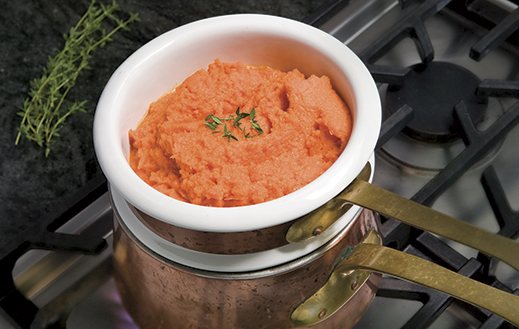
Serves 8 – 12 people as an accompaniment
2 lbs. carrots – peeled and cut into ¼ rounds
2 oz butter
2 tablespoons chives – finely chopped
2 sprigs fresh thyme – leaves removed from the stems
salt and pepper
TURNIP PUREE
Serves 8 – 12 people as an accompaniment
2 Lbs. turnips – peeled and cut into 1 inch chunks
½ cup crème fraiche
2 tablespoons freshly chopped parsley
salt and pepper
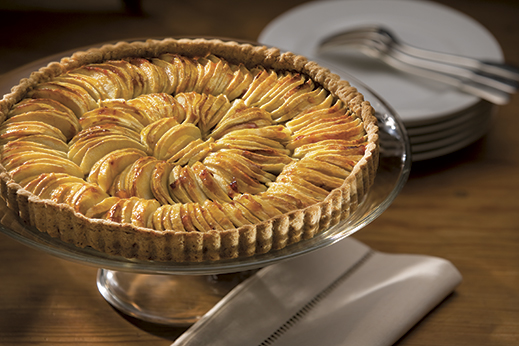
TARTE FINE AUX POMMES
Whereas I make a new soup and have tinkered with the main course for Thanksgiving annually, there is one dish I make without fail at the request of my godson Charlie and his brother William with whom we have shared this holiday since the year he was born. It is a dessert I learnt to make with my mother when I was little and I have loved it ever since. It is filled to the brim with apples and is to me the epitome of an autumnal dessert.
Serves 8
For the pastry:
5 oz unbleached all purpose flour – sifted
5 oz almond meal or almond flour
6 oz slightly softened butter – cut up into small pieces.
1 large egg
Pinch of salt
For the apples:
2 tablespoons sugar
2 tablespoons Calvados
1/ 3 cup apricot jam
8 large apples (Granny Smiths, Golden Delicious, Gala’s – a mixture is also fine) peeled, quartered and cut into thin even slices.
Origins: Apples are the most widely cultivated fruit in the world. They originated in Asia Minor and grew wild in Europe in pre-historic times. From Greek mythology - Zeus and his bride Hera are said to have received a tree with golden apples on their wedding day – to great classic poets such as Homer who wrote of apples in The Odyssey in 800BC, the fruit has been part of the world’s cultural and gastronomical heritage. The Greeks, Romans and Ancient Persians all cultivated, grafted and wrote about apples. Shakespeare spoke of them in his plays and Sir Isaac Newton, inspired by watching falling apples discovered the laws of gravity. Certain cultivars are closely associated with their countries of origin, Cox’s Orange Pippins and Russets in the UK for example and Golden Delicious in the US. Granny Smith’s originated in Australia, McIntosh in Canada and Reinettes are a French specialty. One of the most scented apples known as Calville Blanche d’Hivers, a rare variety form Normandy, that dates back to the 1500’s, is said to be the most delectable of all.
The drizzle and sometimes grey sky of winter is fading behind us, mirroring an ebb tide, retreating into the distance. Left in the tide’s wake are all sorts of ocean going creatures who take this twice daily break as an opportunity to hunt for food or doze in the pools. The turn of the season is similar to this. The first of the spring flowers peek their stems and heads above the ground as the weather warms up, only to retreat a little when a final winter blast streaks across the sky.
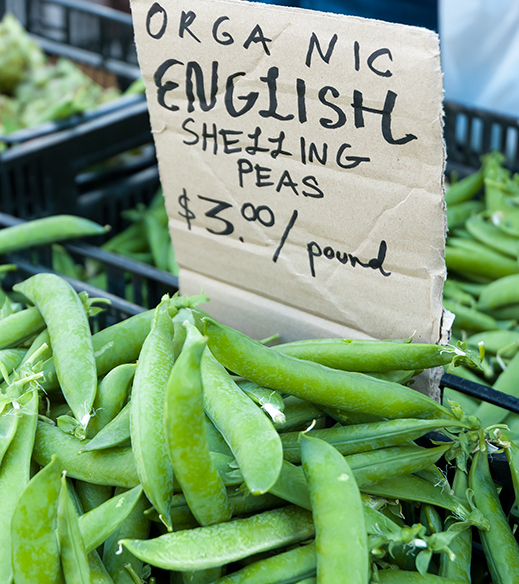
Then, as the days lengthen, the garden picks up steam. Shoots sprout; pea’s spring; their tentacles curl on climbing frames. Pods grow and ripen. Spring showers nurture the soil where the raw materials for culinary marvels dwell. There are fronds of fresh fennel, sweet green garlic bulbs, a sudden bloom of morel mushrooms and the fruit trees fill with blossom. Meandering through an early spring garden one senses the New Year’s crop emerging from the earth. Long dormant plants have pushed their way into the fresh air. Tulips dance in the wind. A pot of daffodils in the kitchen brings a ray of sunlight, that fresh clear sunlight that is an echo of the new season.
The spring garden yields some of the great treasures of the kitchen, amongst them white asparagus. There are a few passionate gardeners who will tend these fragile stems, carefully mounding the earth around their stalks as they grow, ensuring that they never see daylight, thus preserving their pale creamy colour. As much as I love growing fruits and vegetables I admit that I have never mastered this one. However, coming across them in a local farmer’s field was a revelation – akin to discovering a hidden, precious gem.
Asparagus, a royal treat, has grown in Europe and Egypt for more than two thousand years. The green variety graced the tables of roman emperors and was a particular favorite of The Roi Soleil, King Louis XIV. White asparagus made its first appearance in France in the mid-1600’s and has become a specialty of many European cuisines, particularly in France, Belgium, Germany and Austria, where it is served in myriad ways. I have always felt that the simpler the better – with vinaigrette perhaps, warm butter or a light herb sauce which compliments the delicate flavor of this vegetable.
Hanging above the delicate rows of asparagus in this nascent garden, a harvest of fava beans and spring peas waits to be plucked from their bright pods. These hidden, tiny orbs - a riot of vibrant greens - married in a zesty and crisp salad, are the perfect compliment to a dish that evokes the season: Spring Lamb. The latter is now a misnomer, as lamb is now available year round due to the advances (if one wishes to call it that) in animal husbandry and yet few dishes are as tied to a season as lamb.
Lamb dishes are steeped in centuries of culinary traditions, notably as a central part of Easter celebrations. However, predating Christian customs, lamb served at this time of year has its origins in the Jewish faith where it is one of the traditional foods served during the Passover Seder. My family has a penchant for lamb and it has always featured as the main course of our Easter repasts, usually in the form of a leg of lamb, often served with a dish of flageolet beans. This was and is a hearty dish that complimented the often freezing weather that occurred as we celebrated the spring holidays in France. Our milder Californian climate called for a lighter touch, hence the salad and the fava beans are a tender tribute to the flageolet.
If my savory taste buds are captivated by white asparagus and fava beans in this embryonic season, then the sweet ones are enthralled with a fruit whose season is, alas, far too short. The poet Rainer Maria Rilke once wrote “Spring has returned. The earth is like a child that knows poems”. I like to think that earth’s poetry is perfectly encapsulated in this fruit. Its pale pink and milky white blossoms are one of the first to emerge in our springtime gardens. It is a floral hint of the treats to come. It is the simple apricot. Yet these small golden-orange spheres offer a plethora of gustatory choices. Eaten freshly picked off the tree is a delight, particularly when perfectly ripe. They are juicy, succulent, tender and sweet. They can be poached, roasted, dried and made into preserves. My admiration for all things connected with apricots stems from my grandmother’s garden in the French Alps. She had half a dozen apricot trees, which bore a staggering number of fruit, all dutifully turned into compotes and jams.
The children of the house hauled the laden baskets up from the garden and into her kitchen. Preparing the fruit for apricot jam was an all day project and we usually ended the day with sticky fingers, a smile on our faces and the promise of her apricot clafoutis for dessert. We would also ceremoniously carry back to London (where we lived at the time) two jars of this extraordinary jam – truly the essence of apricots, captured in a glistening amber-hued mélange that was her trademark. We made it last for as long as we could, for it would be months before we could get our hands on any more.
Years passed and I began making my own jams. Frustrated by my inability to recreate the flavor she had in her preserves, I scoured many a farmers market to find organically grown fruit that were similar in taste and fragrance to hers. I am delighted to say that our local markets have a wealth of apricot growers who will flood our tables with these precious gems and whose fruit make wonderful preserves. However don’t wait too long - as implied by its name, Apricot, means early-ripening or precocious stemming from the Latin word praecoquus - or the season will be over!
WHITE ASPARAGUS WITH A HERBED MOUSSELINE SAUCE
Serves 8 people
2 lbs white asparagus - bottom half of the stems peeled and trimmed
4 egg yolks
2 tablespoons fresh lemon juice
Large pinch salt
10 oz butter - clarified
White pepper
1/2 bunch parsley - finely chopped
1/2 bunch dill - finely chopped
4 tablespoons crème fraiche
Note: White asparagus need to have their stalks peeled. However, as the stalks break easily, the easiest way to do this is to place them on your work surface with the tips facing towards you. Then using a vegetable peeler, peel the stalks, starting about 2 inches from the tip, making sure you hold the asparagus flat on the surface as you work.
Sidebar: The Fairview Gardens is one of the few local places to find white asparagus. Visit their 12 ½ acre organic farm on Fairview Avenue in Goleta, walk amongst the scented rows of vegetables and admire the handiwork of their farmers as they tend these tender shoots. Open for self guided tours daily from 10am until sunset. For more information visit their website: www.fairviewgardens.org or Tel (805) 967 7369.
HERB CRUSTED, ROASTED RACKS OF LAMB
Serves 8 people
2 racks of lamb, Frenched if possible or trimmed of almost all the fat
4 cloves garlic - crushed
1½ tablespoons coarse salt
1 tablespoon freshly ground black pepper
¼ cup olive oil
¼ cup fresh rosemary – chopped
¼ cup thyme – chopped
½ glass red wine
2 tablespoons cold butter
Sidebar: Although sheep have been bred for thousands of years, from their origins in Central Asia, their arrival in North America dates back only to the time of Cortez in 1519. Sheep later became a central part of many of the Californian Missions, raised not just for their meat, but also their wool. Over the last 2 decades small scale sheep farmers have had an increasingly difficult time running viable businesses due to the influx of less expensive New Zealand and Australian Lamb and combating predators.
However some smaller, organic, natural farms have managed to carve out a niche market, supplying a small but growing clientele of restaurateurs and gourmets eager to have naturally, locally-raised, hormone-free meat. Amongst those who have a particularly delicate product are Lance and Gay Columbel, owners of the 150 year old James Ranch in Penn Valley, California. Located on 200 acres of green rolling pastures north of Sacramento this family has dedicated itself to raising sheep in the most natural manner possible. The sheep graze on apples, pears, figs, blackberries and wild roses as well as summer and winter grasses and their herbaceous flavored lamb is coveted by many chefs. Information about the farm and their products can be found on their website at www.thejamesranch.com or by calling (530) 432 3306
SPRING PEA AND FAVA BEAN SALAD
Serves 8 people
olive oil
Zest of 1 lemon
1 lb spring peas – shelled
3 lbs Fava Beans (once shelled, this will yield about 2 – 2½ cups – see note)
4 stems green onions – thinly sliced
1 Granny Smith apple – cored and diced
1/3 cup fresh mint leaves – thinly sliced
¼ cup fresh dill – chopped
4 inch long piece Daikon radish – diced
Freshly ground pepper
Lemon juice of 1 lemon
2 tablespoons tarragon vinegar
Note: Fava beans need to be shelled twice. Do not let this put you off as the end result is worth the extra effort. First pop them out of their long pods by running your thumb down the length of the seam. Check the pods before hand to make sure that they are indeed filled with beans. They can sometimes be half full. The beans have a pale green membrane that also needs to be peeled. You can either do this with a small paring knife or plunge the beans into a large pot of boiling water 45 seconds, remove them from the water and then use your fingers to ease them out of the second shell.
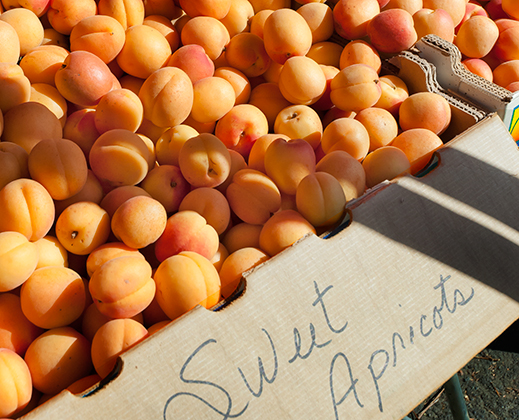
APRICOTS IN BAUMES DE VENISE
Serves 8 people
1 vanilla bean – split lengthwise and the beans scraped out with a knife
½ cup fresh orange juice
1 cup Baumes de Venise – or another sweet white wine
2 tablespoons sugar
2 tablespoons honey
1 teaspoon orange flower water
½ cinnamon stick
2 cloves
16-24 apricots – cut in half

CITRUS COOKIES
Makes 30 cookies
6 oz (1 ½ sticks) butter
2 teaspoons lemon olive oil
4 oz (just under ½ cup) sugar
Zest of 1 large orange (you can use blood oranges when in season too)
½ teaspoon freshly ground pepper
10 oz (2 ¼ cups) flour
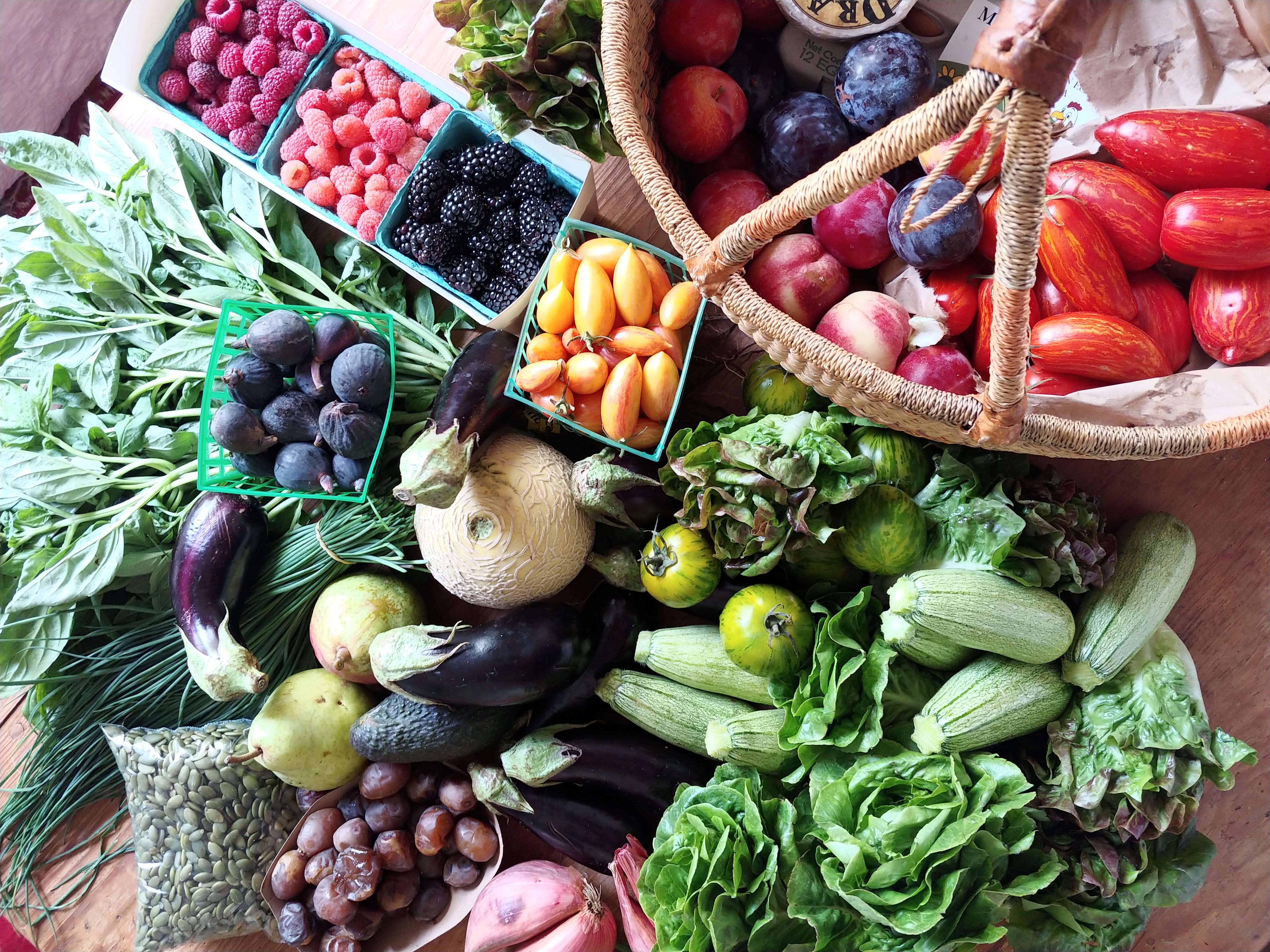
The French gourmet and politician turned gastronomical raconteur Anthalem Brillat-Savarin, recounts in his excellent treatise, The Physiology of Taste, the story of a young nobleman, The Chevalier d’Albignac, who, having escaped the ravages of the French Revolution, found himself in London and in need of earning a living.
One evening whilst dining with friends at an inn, he was approached by a gentlemen, who upon hearing that he was French, asked him if he could make for them a salad ‘in the French fashion’. Appreciative of the solicitous manner in which the request was made, the Chevalier obliged and created a salad that was greatly admired. So much so that he was asked to perform the same task the following week. There again he created a delicious salad. His reputation was quickly established and he spent the next few years traveling around the English capital in a private barouche with cabinets designed to carry his special condiments, including truffles, caviar, anchovies, scented oils and specialized vinegars.
There are some who credit this young entrepreneur with bringing this type of fresh green salad to England and indeed his creations became all the rage. However a century prior to this in 1799, John Evelyn published the first English-Language cookbook dedicated solely to salads - Acetaria: A Discourse on Sallets. He championed eating greens of all sorts, despite the seventeenth century English preference for grains and odiferous meats. He directed his readers to ‘dress their salads with oil of a pallid olive … such as native Lucca olives’ encouraged the use of the best available vinegar, suggested adding fine crystals of salt, and recommended mixing salad greens with mache, spinach, arrugula, endive, fennel, radish and nasturtiums. In short a salad that I would make for lunch today.
The current fashion for salads with a multitude of ingredients, a blending of savory and sweet, is not as we can see some hot new trend. Indeed, Mr. Evelyn’s work is pre-dated by millennia to the time of ancient Rome. In Columella’s epic work De Re Rustica, he describes a salad of fresh mint, cilantro, leeks and parsley, thyme, fresh cheese dressed with olive oil, vinegar, salt and pepper. What could be more apropos?
In the sixteen hundred years (or so) that have passed since the fall of Rome, culinary trends have ebbed and flowed, a mirror of their epoch. The influence of the church, both Roman Catholic and Eastern Orthodox, had profound effects on how, when and what food was consumed. The humble salad, however, seems to have escaped the dietary restrictions imposed by the various religious and political orders of the ages and weathered the centuries seemingly intact. Despite the fact that the English went through phases of distrusting raw vegetables, and according to William Harrison in his 1577 work on the fifteenth century dietary habits of his countrymen, who considered this ‘food as more meet for hogs and savage beasts to feed upon than mankind’, the salad that graced the table’s in Shakespeare’s time would not be out of place today. The bard’s plays are sprinkled with herbal references and gests on salads - ‘She was the sweet-marjoram of the sallat, or rather, the herb of grace’ or then again ‘pick a sallat another while, which is not amiss to cool a man’s stomach this hot weather’.
This second quote reflects a belief that holds true to this day (that salads are cooling) and influenced at what point in a meal salads were and are eaten. Since the time of Aristotle and Galen’s theory of the ‘four bodily humors’, all foods were attributed certain properties that affected a person’s health and digestion. They were to varying degrees hot or cold, moist or dry. Different foods had to be consumed in a particular order to open the appetite and aid digestion. Lighter foods, it was said, should be served first (hence the salad at the beginning of the meal) and heavier meats and dishes would follow. This practice is still followed in the United States.
The passage of time and modern eating habits have had an influence on just when we should serve a salad. There are those that argue that the vinegar in most salads will destroy the taste of any wine served with it and should therefore be served at the end of the meal. Others reason that the digestive effect of salad is more effective when served after the main course; a tradition adhered to in France. Whatever one’s preference, this dish has now evolved to the point that is has become a meal in and of itself.
With the notable exception of the horrors of molded Jello salads foisted upon the masses in the 1950’s - a wiggling mass of lime green, filled with suspended olives and tomatoes and decorated with mayonnaise – salads have thankfully emerged into the creative and delicious amalgams reflective of the 21st century. Now the new blend of cross-cultures draws dishes from around the world and influences everyday cooking.
Tabouleh, the Middle Eastern herb and bulgur salad is now ubiquitous, as is Salade Nicoise, the tuna, green bean, tomato and egg specialty from Nice. Asian and African spices have become readily available; Chermoula, Za’atar, Ras al Hanout, Curry Leaves, Kokum, Sichuan Pepper, Wasabi and Tamarind to name a few.
Our global market place has not only influenced what we put into these dishes but also what we grow. Our local farmer’s markets are now filled with Daikon, Mung Beans, Bok Choy, Chinese cabbage and more. Local farmers who immigrated from Laos, Vietnam and Cambodia have brought in vegetables native to their cultures and these in turn have become part of our new, seasonal culinary heritage. A trend that will continue to grow as the migration of people around the world continues.
It is refreshing to know that the fundamentals of salad making depend on a few simple things; excellent (preferably local) fresh ingredients and as Oscar Wilde once said ‘To make a good salad is to be a brilliant diplomat – the problem is entirely the same in both cases. To know how much oil one must put with one’s vinegar’. Evidently the Chevalier d’Albignac knew precisely what proportions to use for he returned to his native France, his fortune made from making salad with élan.
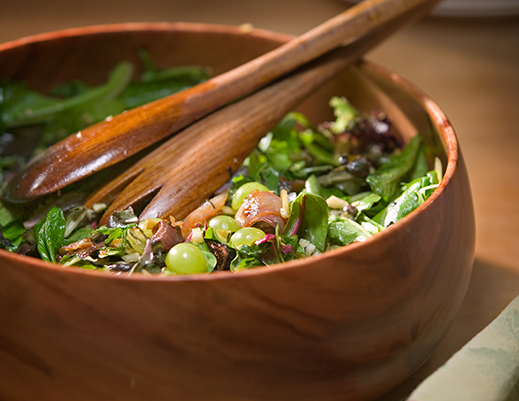
Serves 8 people
For the shallots:
8 whole shallots – peeled and cut in half
1 teaspoon butter
1 tablespoon olive oil
2 teaspoons sugar
Salt and pepper
For the salad:
¾ lb field greens – washed
1 fennel bulb – sliced and then cut into thin pieces
4 oz Roquefort cheese – crumbled
½ lb grapes – each grape cut in half if they are very big
For the vinaigrette:
¼ cup olive oil
2 tablespoons apple bouquet vinegar
1 teaspoon fig puree
A pinch of coarse salt
GRILLED DUCK, ENDIVES AND ARRUGULA SALAD
Serves 8 people
8 duck breasts – skin side scored lightly with a sharp knife
For the vinaigrette
Olive oil
3 tablespoons apple bouquet vinegar
2 teaspoons fig puree
3 or 4 twists of freshly ground black pepper
1 pinch coarse sea salt
½ lb arrugula
¼ lb mixed salad greens
1 tablespoon light brown sugar
1 tablespoon Butter
4 endives – sliced crosswise into thin strips
Chives – finely chopped
LATE SUMMER PEACH AND FETA SALAD
Serves 8 people
4 peaches – sliced
2 apples – cored and sliced
1 bunch radishes – cut into thin slices
8oz feta – cut into small pieces
1 bunch spring onions – thinly sliced
1 bunch chives – finely diced
Zest of 1 lemon
4 oz black olives – sliced
Lemon olive oil
A large pinch coarse sea salt
Coarsely ground black peppercorns
WILD SALMON SALAD
Serves 8 people
For the beets: [Note: these need to be prepared ahead of the salmon if you only have one oven.]
8 medium –large golden beets – peeled and cut into eighths
1 large red onion – thinly sliced
6 shallots – peeled and quartered
2 tablespoons olive oil
1 tablespoon sweet vinegar – such as a balsamic or apple cider
Coarse sea salt
Pepper
1 bunch chives – finely chopped
For the salmon:
2lbs wild salmon
½ cup shallots – finely diced
¼ cup dill – finely chopped
¼ cup parsley – finely chopped
Zest and juice of 1 lemon
1 tablespoon olive oil
Coarse moist sea salt
Black pepper
For the salad:
1 tablespoon mustard
3 tablespoons olive oil
1 tablespoon red wine vinegar
Coarse salt
pepper
8 oz arrugula
1 bunch lemon-basil – finely chopped
½ bunch cilantro – finely chopped
4 hard boiled eggs – shelled and cut into eighths
Pink flake salt - optional
This is excellent with a slightly chilled white wine or for a special occasion a glass of champagne.